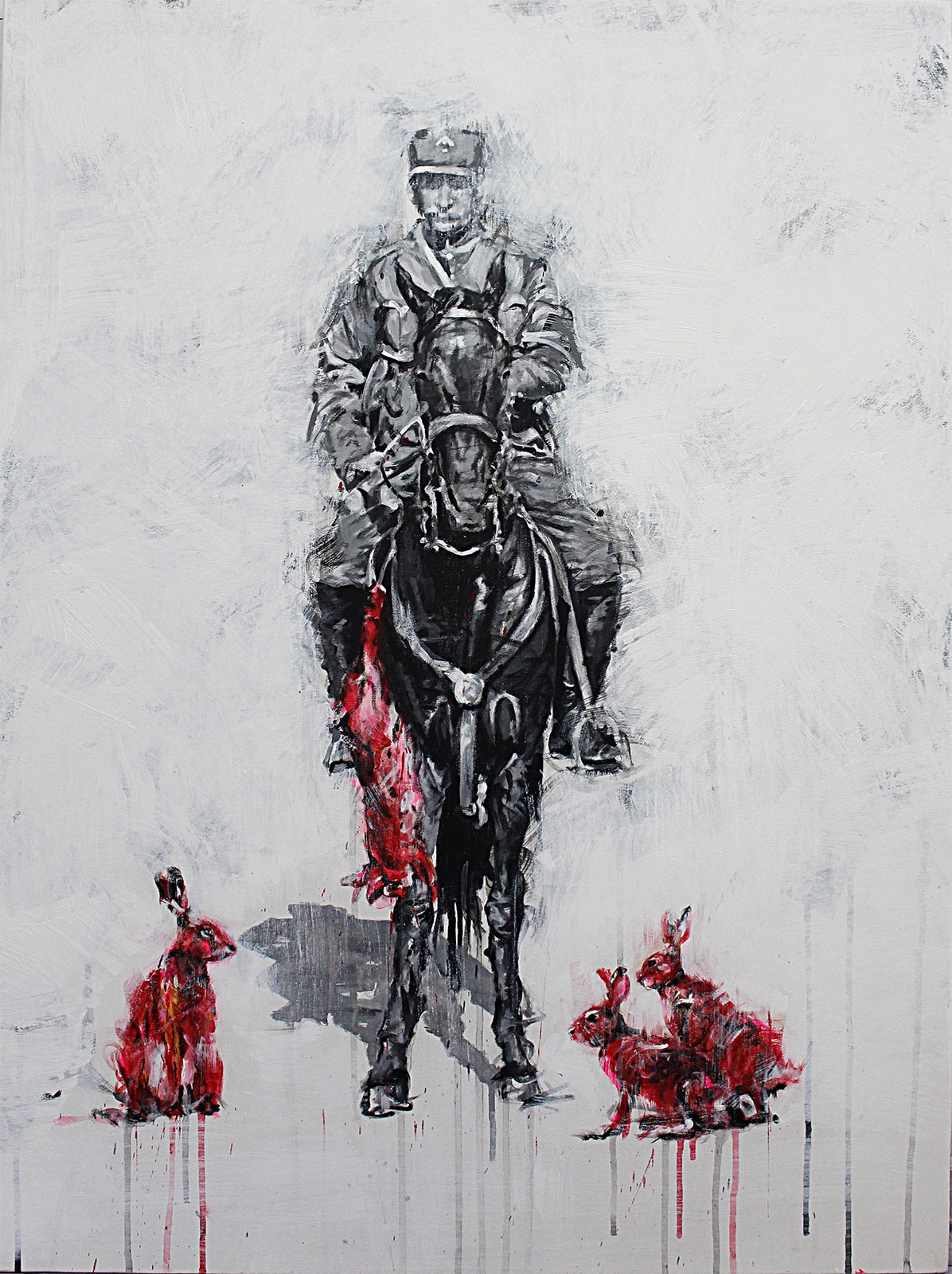Rome,
Via di Monserrato, 30, Italy
6 May 2016 - 25 June 2016
This collection was inspired by James Thurber’s fairytale, “The Rabbits Who Caused all the Trouble” (1939). A group of animals are the main characters of the story, which focuses on the oppressive relationship between the rabbits and the wolves. The latter accuse the former of causing all of the world’s calamities. The American writer uses the story to allude to the events that unfolded during the Second World War. The rabbits represent the Jewish people and the others who were oppressed at the hands of Nazi Germany. The other animals’ indifference to what is happening portrays the role that other nations played as the Holocaust unfolded.
On her canvases, Vismeh replaces the wolves with the rooster, which, as a virile and aggressive fighter, is the Persian symbol for masculinity.
Thurber’s allegorical fairytale is transformed by the painter into a powerful comment on the political situation in her homeland. Starting from the historical events that have taken place in Iran over time, Vismeh builds an evocative narrative of the different moments when its people had to live through hardships: the bombings, wars, and the obligatory removal and subsequent implementation of headscarves for women (the latter after the revolution in 1979).
